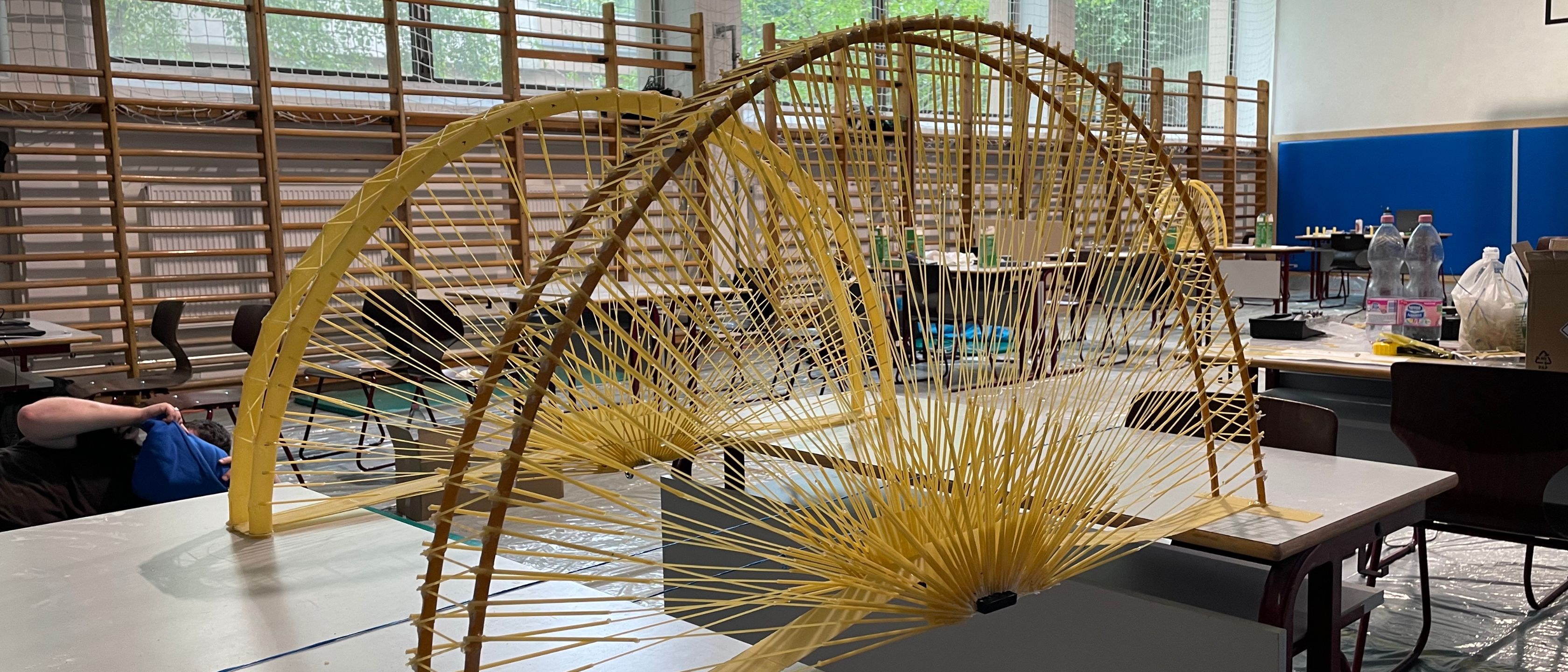
2025-06-25 08:12
Engineering debut success at the world championship
Spaghetti, penne, lasagna, and cannelloni – these aren't from an Italian restaurant's menu, but rather the building blocks for one of the world's most unique engineering competitions. For the first time this year, John von Neumann's team entered the Pasta Bridge Building World Championship and immediately made a significant impact.
The 10th Jubilee "Reccs" Pasta Bridge Building World Championship was more than just a test of technical know-how; it demanded creativity, patience, and precise engineering from all participants. The Neumann team, making their debut at this distinctive international event, quickly drew attention by constructing a bridge capable of bearing nearly 85 kilograms of load. The entire design and construction process was completed in just a few weeks, and despite the tight deadline, both the students and their mentor rose to the challenge admirably. This project wasn't just about gaining professional experience; it fostered genuine teamwork and engineering problem-solving, areas where the JvNU engineering students truly excelled.
Emese Kozák, an engineering lecturer at John von Neumann University, has been a valuable member of the Manufacturing Technology Department's Research Group since last August. A mechanical engineer by training, she is also currently pursuing her master's degree at the university, specializing in Tool and Special Machine Design.
The pasta bridge journey began in April when Emese was asked to assemble a team for the upcoming World Championship in May. Despite the incredibly tight schedule, she successfully recruited four enthusiastic mechanical engineering students who immediately dedicated themselves to the task. Motivation was never an issue – and it was certainly crucial, given the monumental undertaking ahead of them.
The bridge-building process kicked off with 3D design, with the initial models meticulously crafted in Inventor software. The team explored various concepts, researching how previous world champion pasta bridges were built and the principles that made them exceptionally load-bearing. These successful solutions were then digitally modeled.
The use of 3D design offered numerous advantages. It allowed the team to conduct finite element simulations, which helped them compare the behavior of different structural designs under identical load conditions. While the precise mechanical properties of the pasta weren't extensively analyzed this time, the simulations still effectively demonstrated the types and magnitudes of stresses each structure could endure. Beyond analysis, the 3D model also served a practical purpose: it acted as a template for construction, significantly simplifying the physical build.
Adhering to the competition's strict regulations, the bridge's total mass could not exceed 1000 grams. During construction, a variety of pasta types were strategically employed: cannelloni and penne formed the arches, spaghetti was used for the tension elements, and lasagna sheets created the road surface.
The construction process was incredibly demanding and time-consuming, often requiring the team to work late into the night to bring the bridge to life. However, their dedication ultimately bore fruit: on the day of the competition, the bridge built by the John von Neumann team successfully withstood a load of nearly 85 kilograms. While this impressive result didn't secure a podium finish, the participants were immensely proud to have achieved such a remarkable feat with limited preparation time, especially as it was the university's first-ever entry into the competition.
Emese Kozák extended her heartfelt thanks to everyone who contributed to the project's success, even through a word of encouragement. János Liska and Adrián Bognár provided invaluable assistance with the department's 3D technology, Anita Földházi offered administrative support, and the Henkel Loctite team contributed high-quality products and flexibility crucial for their preparation.
The dedicated team members who participated in the competition were: József Dániel Mikus, András Nagy, Csaba Tibor Vigh, and Norbert István Kurta.

.png?r=9ddcb9b2240b01709c87826560b6f73e)